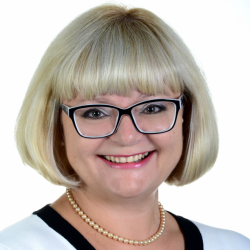«History of Mathematics»
Integrated extracurricular activity
in mathematics and English for 9th grade students
The content of the lesson covers the entire period of the development of mathematics and the contribution of foreign scientists to this development. Informational historical and regional studies material, accompanied by practical tasks, ensures the consistency of students' knowledge.
Students consolidate computational skills and abilities on historical material: solve problems using equations; perform actions on numbers, including tasks of an entertaining nature; improve language skills.
With the help of a "time machine", students get to the ancient Stone Age city of Caves and find out how the account was kept at that time.
Presenters:
We have received a message from a resident of the city of Caves who tells about the life of primitive people: "We already knew how to count in the ancient world, and life itself taught us this. It was necessary to count people during hunting, animals, divide the prey equally. We used our fingers and toes to count.
We want to see if you can count our task.
Yesterday, 2 hands, 1 leg and 2 fingers participated in the hunt. How many of us were there? Don't you know? It's easy. 2 hands are 10, 1 leg is 5 and 2 fingers.
(The guys guess.) "There were 17 people in total"
The city of Pyramidin, in Egypt
Presenters:
With the development of agriculture, cattle breeding, trade, there is a need to measure, count. A lot of mathematical information is left in Egyptian papyri and on Babylonian cuneiform tables. The Mathematical Papyrus of Ahmes — an ancient Egyptian textbook on arithmetic and geometry. The Ahmes papyrus was discovered in 1858 and is often called the Rynd papyrus after its first owner. In 1870 the papyrus was deciphered, translated and published. Now most of the manuscript is in the British Museum in London, and the second part is in New York.
The Moscow mathematical papyrus, located in the Pushkin State Museum of Fine Arts, is inferior to the Ahmes papyrus in completeness, but surpasses it in age.
Solve an ancient problem written on papyrus:
There were 7 houses, 7 cats in each house, each cat ate 7 mice, each mouse ate 7 spikelets, each ear gave 7 measures of grain.
Find the sum of the total number of houses, cats, mice, ears and grain measures:
"Seven persons have seven cats; each cat eats seven mice, each mouse eats seven ears, seven measures of barley can grow from each ear. How big are the numbers of this series and their sum?" Solving the problem
(There are only 7 people, 72 = 49 cats, they eat only 73 = 343 mice, which eat only 74 = 2401 ears, 75 = 16,807 measures of barley grow out of them, in total these numbers give 19,607).
The country of Pythagoria
Presenters:
1.The first mathematicians who made many discoveries, of which the main one is the introduction to the mathematics of proofs, lived in the VI century BC. This is Thales of Miletus and his disciple, the great Pythagoras. In the 8th grade we will study the famous Pythagorean theorem, which is very widely used in geometry. Pythagoras and his disciples stood at the origins of arithmetic.
2. The famous scientist Euclid brought together all the discoveries of Greek mathematicians in 13 books under the general title "Beginnings". For two millennia, this scientific work has been an encyclopedia and a textbook on mathematics.
3. The greatest scientist of antiquity was Archimedes (287-212 BC). He discovered a number of the most important laws of nature, which we will study in physics lessons. He was the first to calculate the number p. (What is it equal to?) He also calculated the areas and volumes of many important geometric shapes and bodies.
A task. Pythagoras said: "Half of my students study mathematics; a quarter study music; the seventh part is silent, besides, there are three women." How many students did Pythagoras have?
(Students solve the problem.)
The digital city
Presenters:
"The gates only open to those who know different numbers."
Name the numbers correctly in English: 24, 81, 185, 314, 2157, 300, 3, 99.
Newtonian
Presenters:
Students of "country studies" are introduced to foreign scientists-mathematicians who lived during this period.
1.Karl Gauss, the greatest German mathematician, already at an early age showed extraordinary abilities to study mathematics. The ability to count has always surprised people. When performing calculations, he always observed an exemplary order.
A task. Find the sum of natural numbers from 1 to 100. Solution:
(Students solve a problem that Gauss instantly solved when he was 10 years old.)
2.German mathematician Jan Widmann was the first to use the signs "+" and "–" in print for addition and subtraction
3.German mathematician Leibniz. He introduced modern multiplication signs in the form of "•" and division in the form of ":". For the first time he began to use the division Sign in 1684, and multiplication in 1698.
4.English mathematicians made a great contribution to the introduction of modern signs. The equal sign introduced the Record in 1557.
The signs of inequality more "" and less " were introduced by Harriot in 1631.
5.Newton is a great English scientist. The years of his life – 1642-1722. To discover his laws, he had to do a lot of mathematics. We will get acquainted with Newton's mathematical discoveries in grades 10-11, studying the subject "Algebra and the beginning of analysis". Let's also get acquainted with the law of universal gravitation, the integral.
"The Time Machine" brings the students back to class
Students repeat the information and receive orders with the image of great mathematicians.

















